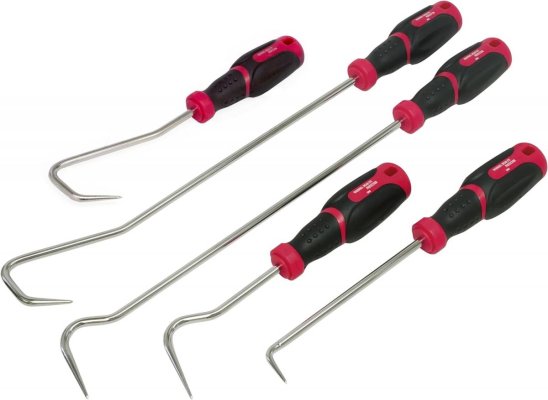Greg is so very right, especially concerning aftercoolers!!!!

Barnacle buster treatment is really only a "stop gap" treatment (partially dealing with a small part of the necessary maintenance), maybe mid-season, to try to reduce engine temps by improving water flow throughout the raw water cooling side of the engine cooling system by reducing build up of salts, sea creature particles, etc.. However, ALL components of the raw water cooling system (aftercooler, heat exchangers, oil coolers, fuel coolers, tranny coolers, etc.) require periodic OFF ENGINE servicing that includes a thorough cleaning, replacement of gaskets and/or seals, (for aftercoolers heavy greasing used as a barrier), and PRESSURE TESTING. Pressure testing is the only way one can be assured that ALL of the various liquids stay ONLY where they are supposed to be. You don't want salt water (or even freshwater) in the engine oil, engine coolant, fuel, tranny, or the engine air intake, etc.!

These types of failures can be very, very expensive, sometimes requiring an engine replacement. Hence the need for PREVENTATIVE MAINTENANCE.
For those boaters who operate in freshwater, or who moor in the off season in freshwater, or who regularly freshwater flush their engines, this full servicing can be delayed (time between services can be extended),
maybe by as much as up to double the time? The recommendations I have seen state that normally this type of servicing should take place at about 3-5 year intervals (change the anti-freeze/coolant at the same time). However, as several on this forum have alluded, aftercoolers require servicing off engine even more often (every 2-3 years). I am not familiar with CAT aftercoolers, but on Cummins, (especially if not freshwater flushed), you have dissimilar metals in close proximity sitting in an electrolyte solution (saltwater). A perfect recipe for corrosion, often resulting in the parts essentially "welding" together (13 tons to separate)!!

I know that some here will say, "I don't do all of that and I have not had a problem". Lucky so far???

Potentially unaware of the lurking problems to come?? Some also are "real gamblers", and spend lots at the casino "hoping to win big". Personally, not the way I like to "roll". Also, we travelled a long way "off the beaten path" and I did not want to face a major breakdown while "out in the boonies", so I did my best to follow recommended PREVENTATIVE maintenance.
Your boat, your money, your risk tolerance. To each his own.


![IMG_2081[1].jpg](/data/attachments/128/128289-4567951b280af98ffa110af623f5e912.jpg)

 These types of failures can be very, very expensive, sometimes requiring an engine replacement. Hence the need for PREVENTATIVE MAINTENANCE.
These types of failures can be very, very expensive, sometimes requiring an engine replacement. Hence the need for PREVENTATIVE MAINTENANCE.
